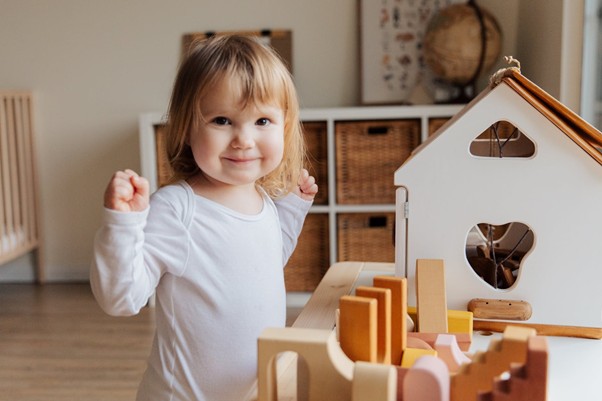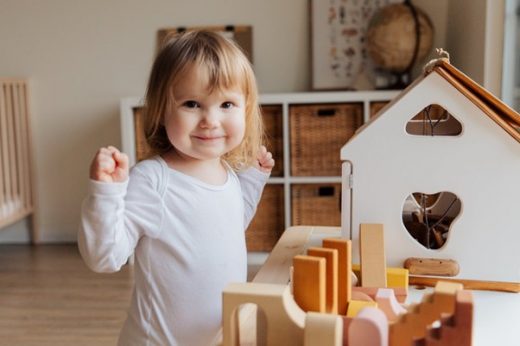9 Tips for stylish, kid-friendly interior design guide, Home children space tips, Property style advice
Stylish Kid-Friendly Interior Design Tips
9 Jun 2021
There are many misconceptions about how having children will impact your love of interior design and elegant decor schemes.
While making adjustments is inevitable, there’s no need to sacrifice your personal style when you become a parent. In fact, there’s plenty of opportunities to personalize your space and make it classy, chic, and stylish while still showcasing a well-used home.
Here are 10 tips for creating stylish, kid-friendly interior design schemes.
Prioritize Functional Storage
One of the first things to consider when developing an interior design scheme in a home with kids is the use of functional storage. Having effective storage systems in place will help keep the area tidy when the days are long and the stress is high.
Fortunately, there are endless designer-inspired storage options that hide toys and other belongings in plain sight. For example, you can invest in a storage ottoman that doubles as a toy chest in the living room. Coordinated baskets on shelves are another fantastic way to hide a mess while adding style and color to the room.
While having functional storage in visible areas is helpful, there are also systems you can put in place to optimize the rest of the home. Small bookshelves, trundle storage for under the bed, and shoe organizers on the backs of the doors are just a few innovative options for keeping your space organized with children.
Prioritize Safety
The most important thing to consider when designing your home to be kid-friendly is safety. Work through a baby-proofing checklist to help identify potential danger zones so that you can create a design-friendly plan to protect your children.
For example, if your home has a staircase, you’ll likely need a baby gate to prevent any dangerous falls. However, you don’t need to buy a plastic telescopic one from the local department store. As this might be something you use for years to come, procuring a custom hinge gate that suits your decor scheme will keep your kids safe without sacrificing style.
Another key focal point is heavy furniture such as shelves and dressers — anything a child might try to climb. You can choose the style of furniture that you like. However, taking the time to mount everything to the wall can prevent devastating accidents.
Many of the safety enhancements for modern homes are subtle and practically invisible to visitors. For example, you can add no-slip attachments to the bottom of your nice throw rug or interior cabinet locks in the kitchen and bathroom. With these innovations, you can keep your family safe without detracting from your decor scheme.
Rethink Your Feng Shui
There’s no reason why you can’t have the ceramic statues and stunning vases you love on display. However, you’ll need to rethink where you’re putting them to avoid disaster.
Rethink your feng shui so that all breakable or precious items are up high — not only out of reach, but out of mind. Try to organize your furniture to create an open concept room flow, making it easier for little humans to navigate.
Open concept floor plans also make it easier to relax and enjoy your space while minding the kids. The fewer visual barriers you have, the fewer places they can hide with a Sharpie.
Choose Durable Textiles
While you don’t have to sacrifice your style, you will have to make some compromises. The textiles and fabrics you choose for your furniture and accent pieces are one of those compromises. You may dream of a soft white velvet couch or cashmere throw blankets, but now isn’t the time.
Instead, choose fabrics that are built to last. Some of the best couch fabrics for families include:
• Synthetic microfiber
• Canvas
• Denim
• Leather
Using slipcovers can also help increase the lifespan of couches and chairs when kids are around, while still suiting the decor.
It’s also important to be considerate of what materials you use for curtains and rugs. Many designers use outdoor rugs indoors to increase the durability in high-traffic areas. For curtains, choose a fabric you can throw in the washer when dirty hands inevitably find their way onto the material.
Make a Statement With Art
Another misconception about creating an elegant design scheme with kids in the home is that you have to sacrifice fine art for something more family-oriented. The truth is, kids could care less about what art is on the walls, so choose what appeals to you; this is your opportunity to shine.
It’s also important to consider your tolerance level for explaining what the pieces mean as your children get older. It’s natural for them to develop curiosity about the content of the images on their walls. So, while a Renaissance-style painting is great, if you don’t want to talk about why everyone is naked, maybe opt for a different piece.
If you’re so inclined, you can incorporate your children’s art into the decor as well. Framing your favorite pieces to create a gallery wall is a sophisticated way to find your balance between your casual family life and your love of style.
Embrace Softer Edges
Sharp edges and hard corners are a real concern with children, especially as many of those edges tend to be at eye level. Fortunately, softer edges — including round tables and curved couches — have become a hot design trend.
Embrace the vintage looks and softer edges of modern design. By the time the trends change back to sharper pieces, your children will likely be out of the toddler stage.
Choose Colors You Like
Having children doesn’t mean devoting your decor to pastels or shades of pink and blue, unless that’s what you prefer. Again, young children don’t care about what color their room is for the first few years at least. Even then, you can still work with them to choose a shade that suits your style as well as theirs.
Pick the colors you like, opting for an ageless color scheme. Stick to soft neutrals in baby rooms and choose decor that’s easy to change out over time.
Create Kid-Free Zones
It might sound controversial, but it’s ok to set limits about who is allowed in specific rooms or what activities occur there. Traditionally, living rooms and home offices were kid-free zones. If that approach isn’t possible based on your home’s layout or lifestyle, consider setting boundaries about activities in certain rooms.
For example, you may determine that the living room is a quiet place for books and talking, while the rec room is for electronics and games. You might indicate that certain toys stay in specific areas and are not to be used in others. Then, you can turn those areas into places that better fit your design vision.
Learn To Let Go
Finally, the best thing you can do when creating a kid-friendly interior design scheme is learning to let go. That glass table that you dream of making the focal point of your living room may not be in the cards today, but you can have it someday. Spills, stains, dents, and scuffs may happen, but they give a piece of furniture character. In a worst-case scenario, you can get museum-grade glue on Amazon.
Design trends and personal preferences will change and grow as your life changes and grows. Find your balance between interior design and family living, and the rest will fall into place.
Comments on this Tips for Stylish, Kid-Friendly Interior Design article are welcome.
Interior Design
Interior Design Posts
Use of Tapestries in Interior Design
How to combine colors for interior design
Building Articles
Residential Architecture
Comments / photos for the 9 Tips for Stylish, Kid-Friendly Interior Design page welcome






